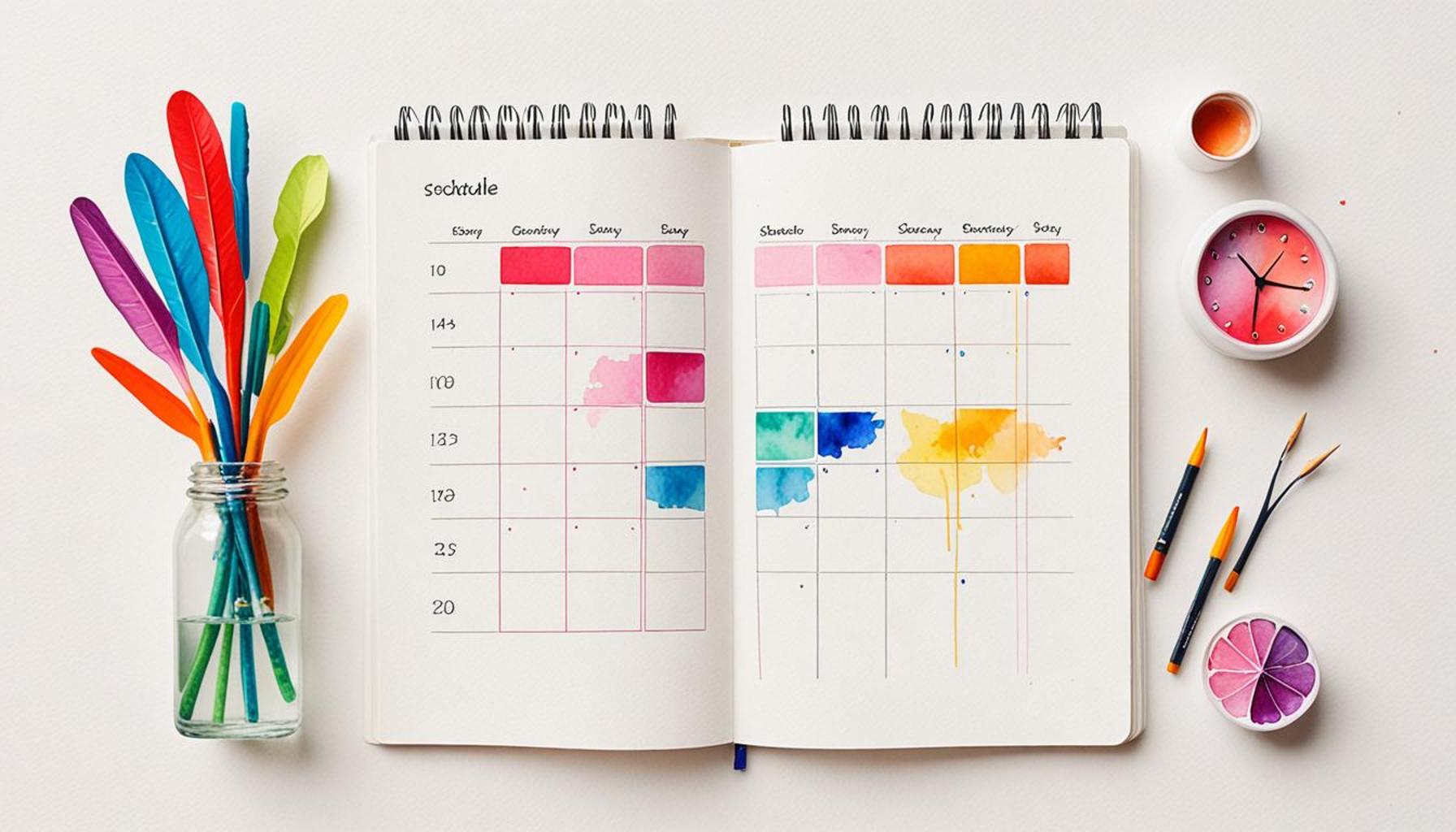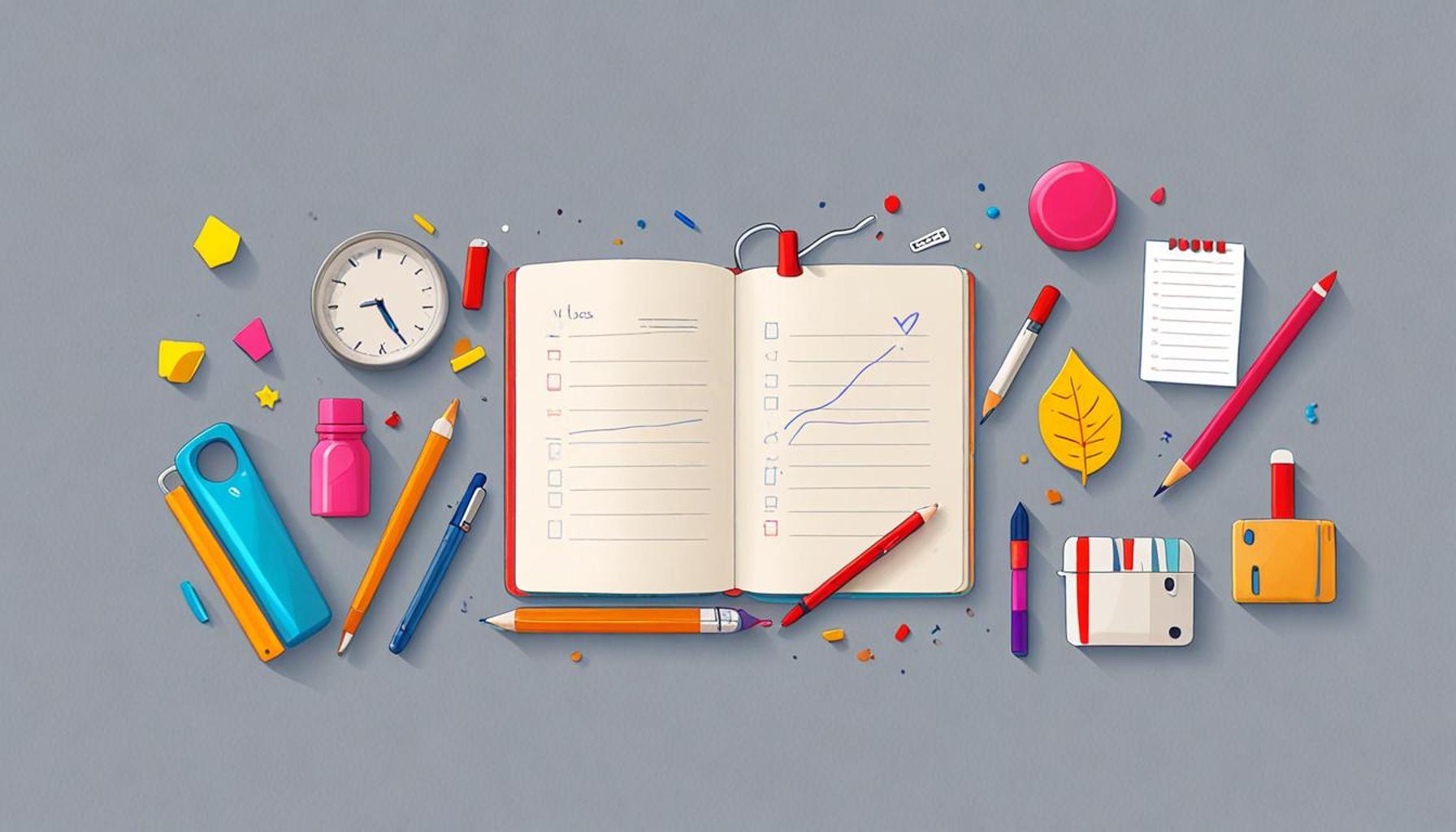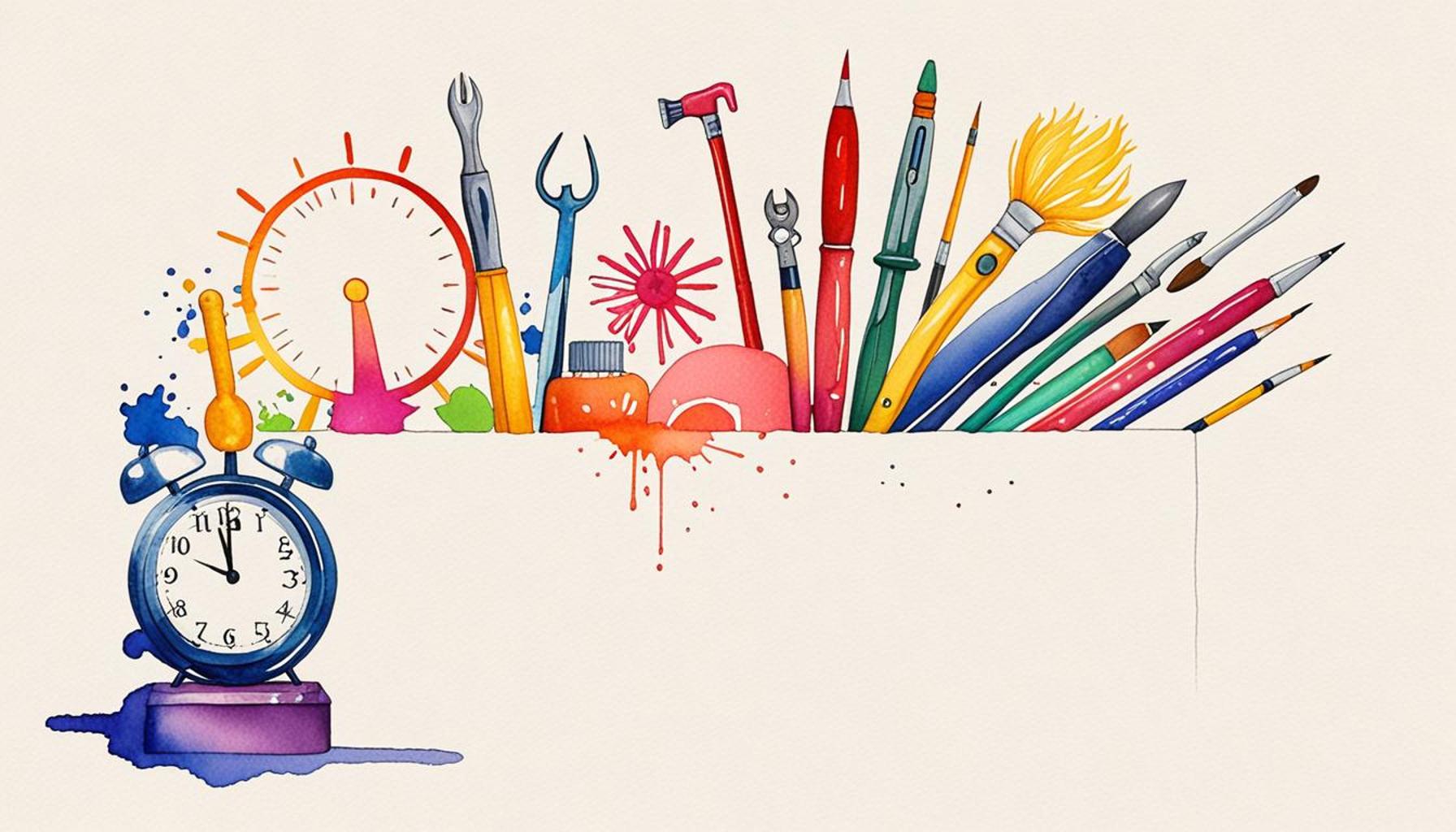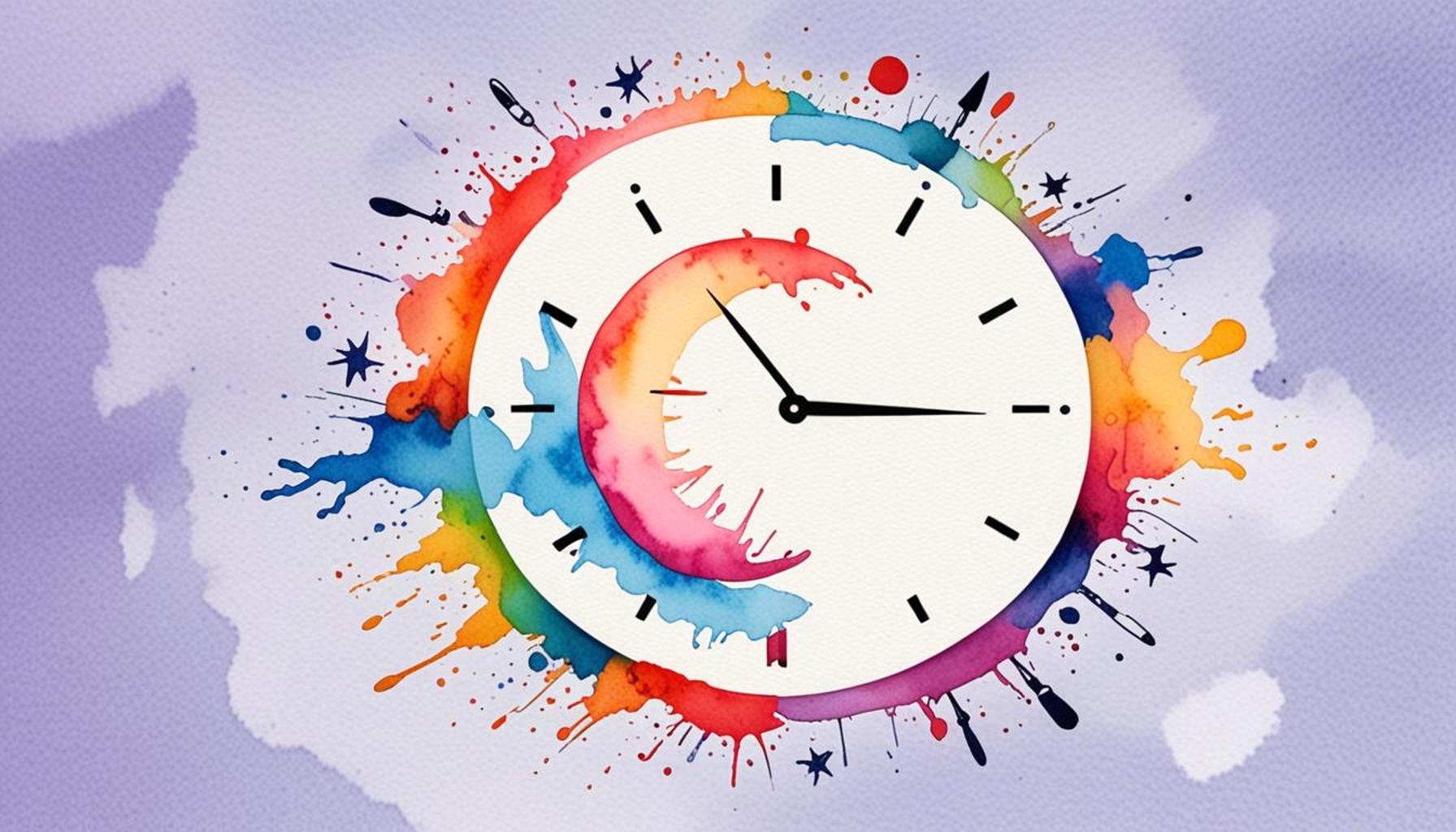Uncomplicating the Agenda: Minimalist Techniques to Organize Your Day

Understanding Minimalism in Daily Life
As life becomes increasingly hectic, many people find themselves juggling an endless list of priorities, both at home and in the workplace. This bombardment of obligations can lead to a sense of chaos that hampers our productivity and well-being. However, adopting minimalist techniques can serve as a powerful antidote to this overwhelm, enabling individuals to streamline their responsibilities and enhance their overall quality of life.
Benefits of Embracing Minimalism
Adopting a minimalist lifestyle comes with numerous advantages that can fundamentally change how you approach your daily tasks. One of the most significant benefits is reduced stress. When you simplify your tasks and minimize unnecessary obligations, you create a more manageable to-do list. For example, instead of overwhelming yourself with ten projects at once, focusing on three essential tasks allows you to channel your energy more effectively, leading to a decreased feeling of anxiety.
Another important aspect of minimalism is the enhanced focus it promotes. By prioritizing what truly matters, you can eliminate distractions and hone in on tasks that align with your goals and values. In the context of the workplace, this might mean setting aside time to tackle high-impact projects rather than getting lost in mundane administrative duties.
Furthermore, minimalism can greatly improve time efficiency. With a simplified agenda, you can better allocate your time to essential tasks, reducing the feeling of running in circles. For instance, using techniques like time blocking—where you assign specific time slots for particular activities—can help you maintain clarity and stay on track, ultimately leading to enhanced productivity.
Practical Techniques to Implement
To help you translate these benefits into action, consider starting with practical techniques to organize your life. Begin by identifying essential tasks and categorizing them into ‘must-dos’ versus less critical items. This can be complemented by regular reviews where you assess ongoing projects, enabling you to adjust your priorities based on immediate needs.
Another effective strategy is to limit distractions. For instance, you might create designated time slots for checking emails or social media, rather than allowing these activities to interrupt your workflow throughout the day. This practice not only helps in maintaining focus but also reinforces a balanced approach to technology usage.
As you explore these methods, remember that a minimalist approach is not one-size-fits-all. You can tailor techniques to fit both personal and professional demands, whether it’s streamlining your family schedule or enhancing teamwork in the office. By instilling a sense of simplicity and clarity in your daily practices, you open the door to a lifestyle that respects your time and nurtures what you value most.
Conclusion
The journey toward minimalism in managing daily agendas is one of self-discovery and ongoing refinement. By embracing this approach, you can create a routine that balances work, personal commitments, and leisure, ultimately fostering a life marked by intention rather than chaos. Join us as we continue to unravel the transformative potential that minimalist techniques hold for improving productivity and enhancing quality of life.
DIVE DEEPER: Click here to discover the power of mindfulness
Simplifying Your Daily Routines
To truly embrace minimalism in your daily life, it is essential to start by simplifying your routines. One effective way to achieve this is by creating a structured daily agenda that focuses exclusively on your priorities. A well-organized schedule not only aids in managing tasks but also cultivates a sense of accomplishment as you check off essential items throughout the day. Begin by taking a moment to analyze what your key responsibilities are—these could vary greatly depending on your career, family life, or personal goals.
It can be beneficial to adopt a ‘daily highlight’ strategy, where you identify one to three key tasks each day that will move you closer to your larger goals. This not only narrows your focus but also provides clarity in your actions. For instance, if you’re a teacher, your daily highlights might include preparing lesson plans, grading assignments, and meeting with parents. Each completed task contributes to your overall sense of achievement, reinforcing a productive mindset.
Organizing Your Tasks Effectively
Upon pinpointing your essential tasks, the next step is to prioritize them effectively. Consider using the Eisenhower Matrix, a simple yet powerful tool that categorizes your tasks into four quadrants based on urgency and importance:
- Quadrant 1: Urgent and Important—tasks that must be done immediately.
- Quadrant 2: Important but Not Urgent—tasks that help you achieve long-term goals.
- Quadrant 3: Urgent but Not Important—tasks that can be delegated.
- Quadrant 4: Not Urgent and Not Important—tasks that can be eliminated.
This matrix provides a framework for deciding what to tackle first, helping you to maintain focus on what truly matters. By relegating less important tasks to lower priority, you can prevent the all-too-common trap of busywork, where you feel productive but accomplish little in terms of your core responsibilities.
Another useful approach is to implement batch processing for similar tasks. This technique involves grouping similar activities and completing them in dedicated timeframes rather than switching between unrelated tasks throughout the day. For example, allocate specific times for returning phone calls, responding to emails, or conducting meetings. This not only optimizes your time but also minimizes the cognitive load associated with constant task switching.
Incorporating technology can also streamline this process. Various productivity apps can help you keep track of tasks, set reminders, and even restrict access to distracting websites during focus periods. By leveraging tools like Trello, Todoist, or Asana, you can maintain clarity and control over your responsibilities.
The goal of employing these minimalist techniques is not to eliminate all tasks from your schedule but to enhance your ability to manage them with ease. By refining your daily agenda, you can not only reduce stress and distractions but also cultivate a more purposeful and satisfying daily experience.
| Advantages | Explanation |
|---|---|
| Increased Productivity | Implementing minimalist techniques allows you to focus on essential tasks, eliminating distractions that hinder efficiency. |
| Reduced Stress | A simpler agenda fosters a sense of control, making it easier to manage your responsibilities and decreasing feelings of overwhelm. |
| Clearer Prioritization | By reducing the number of tasks, you can prioritize effectively and invest time in what truly matters, creating a more meaningful daily experience. |
Embracing minimalist techniques can transform your approach to daily organization. With each advantage carefully designed to complement your lifestyle, you can discover practical ways to enhance not just your productivity, but also your overall well-being. The process begins by identifying distractions and focusing on what genuinely requires your attention. This may involve digital decluttering or establishing boundaries that protect your time. As you begin to embrace these strategies, you may find that your days become less complicated and more rewarding, enabling you to pursue both professional and personal goals effectively.
DIVE DEEPER: Click here to discover more about intentional living
Optimizing Your Environment for Focus
Organizing your day isn’t solely about tasks; your environment plays a crucial role in fostering productivity. The concept of a minimalist workspace can lead to a more efficient workflow. Start by decluttering your physical space—remove unnecessary items from your desk, such as outdated files, knick-knacks, or anything that competes for your attention. Research indicates that a clean environment significantly enhances focus and reduces distractions, allowing you to channel your energy toward the most relevant tasks.
Furthermore, consider the layout and design of your workspace. Natural light, for instance, has been shown to boost mood and productivity levels. If possible, set up your desk near a window to let in ample daylight. Adding elements like plants can also improve air quality and create a calming atmosphere, which may enhance cognitive functions. According to a study from the University of Exeter, incorporating greenery into your workspace can increase productivity by 15%—a statistic that’s hard to ignore!
Incorporating Mindfulness Practices
Aside from optimizing your physical space, integrating mindfulness practices into your daily routine can immensely enhance your focus and clarity. Mindfulness encourages you to be present in the moment, reducing feelings of overwhelm and allowing you to approach your tasks with a clear mind. Simple techniques such as meditation, deep-breathing exercises, or even taking a short walk during breaks can help center your thoughts and reduce stress.
For instance, consider starting your day with a five-minute meditation session. Platforms like Headspace or Calm offer guided meditations specifically tailored to jumpstart your day with intention. Engaging in mindfulness can help you reconnect with your objectives and prioritize effectively throughout your busy schedule.
Time Blocking: A Game Changer
One powerful technique that can revolutionize the way you manage your time is time blocking. This method entails dedicating specific blocks of time to different types of activities or tasks throughout your day. Instead of keeping an open-ended to-do list, you allocate chunks of your day to specific responsibilities. For example, you might schedule two hours in the morning for project work, followed by an hour for meetings, and another hour for emails and calls.
Time blocking not only provides a visual representation of your day but also establishes clear boundaries for when you will tackle specific tasks. This technique reduces the temptation to procrastinate and enhances accountability, helping you stay committed to your intended agenda. A study conducted by the Dominican University of California indicated that people who set specific goals and hold themselves accountable are 33% more likely to achieve them, demonstrating the effectiveness of structured planning.
Building in Flexibility
As you simplify your agenda with these techniques, it is vital to build in some flexibility to accommodate unexpected changes or urgent tasks. A rigid schedule can lead to frustration when things don’t go as planned. Incorporating buffer time between appointments or tasks allows you to adapt smoothly to interruptions or delays, ensuring that your day doesn’t derail entirely. This does not mean that you should abandon discipline; rather, it emphasizes the importance of adaptability in a minimalist approach.
Ultimately, by refining your environment, integrating mindfulness practices, employing time management techniques like time blocking, and allowing room for flexibility, you can streamline your daily agenda. This holistic approach fosters not only an organized day but also nurtures a sense of fulfillment and control, empowering you to tackle each day with clarity and purpose.
DIVE DEEPER: Click here for excellent decluttering techniques for children
Conclusion
In a world that often demands more than we can give, the quest for an organized day through minimalist techniques offers a refreshing approach to reclaiming our time and focus. By embracing a more intentional lifestyle, we can analyze our daily routines and identify what truly matters. Effective strategies, such as decluttering both our physical and mental spaces, not only enhance productivity but also foster a sense of control and peace.
Integrating mindfulness practices into your day cultivates serenity and clarity, allowing for better decision-making when juggling multiple commitments. Additionally, the adoption of time blocking ensures that each task receives the attention it deserves, establishing an efficient flow to the day’s activities. This structured yet flexible approach can prove invaluable, as life is rarely static; room for adaptability is essential for maintaining balance amidst unexpected challenges.
As you embark on your journey to uncomplicate your agenda, remember that simplicity doesn’t equate to a lack of ambition. Rather, it aligns your goals with realistic expectations, helping you focus on what brings the most fulfillment. By fostering an organized, intentional life, you are likely to unearth renewed motivation and creativity that may have been overshadowed by chaos.
Ultimately, it’s about crafting a day that reflects your values and aspirations. With these minimalist techniques, you can transform not only how you plan your time but also how you experience each moment within it. Step into your day with clarity and confidence, and watch as your productivity flourishes and stress diminishes.



